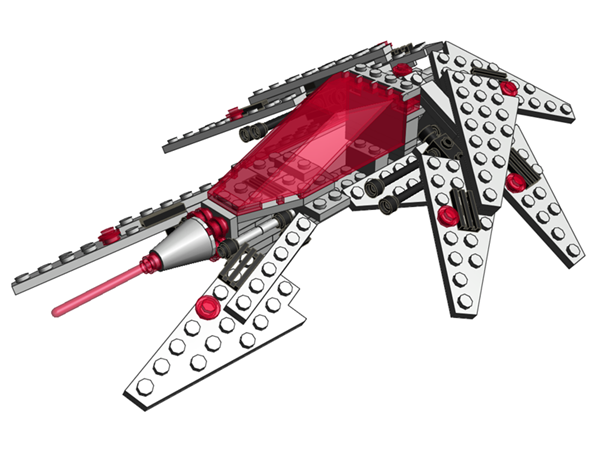
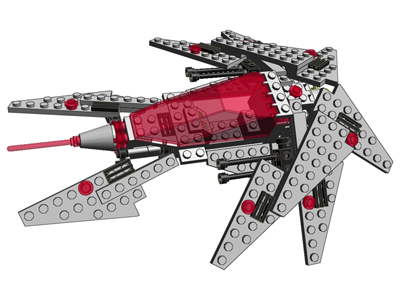 29 Palmtree 29 Palmtree
Finished: 17/4 2003, Pieces: (152), Steps: 45
LWH: 28/23/7 studs, 22/18/6 cm
Inspiration:
    
One of my very best post-MLCad/pre-Lugnet models (if not the best), this one combines technique and details from two lines of development:
- Like with the previous two models (27 Spearhead and 28 Bearhide), this is a continuation of the experiments with hypotech-angled wings layered directly on top of eachother instead of being sandwitched in between a bulky "clamp" of plates atteched to the body (like in the 20 Chickwing 1).
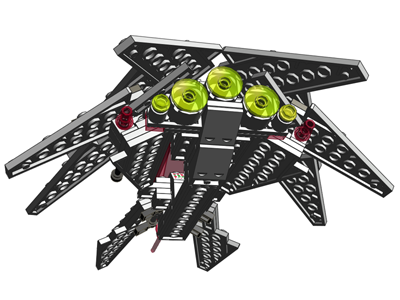 The nose was heavyly inspired by the 22 Chickwing 2 and the nose-cone+antenna of the 20 Chickwing 1 (which I had also used on model 26 a few months before in autumn 2002). The nose was heavyly inspired by the 22 Chickwing 2 and the nose-cone+antenna of the 20 Chickwing 1 (which I had also used on model 26 a few months before in autumn 2002).
Technique, wings:
The upper layer of wings are attached to the lower by two 1x1 plates on top, and a 1x4 plate below which can be seen just above the engine in the picture to the right.
This way the upper wings actually clamp or sandwich the lower wings which make the construction sufficiently strong without showing up on top as bulky clamps.
 The wings are rotated mounted on a technic beam attached to the body with friction pins. The wings are rotated mounted on a technic beam attached to the body with friction pins.
Technique, nose:
After finishing the wings, I had to come up with something similar for the nose.
I started out experimenting with split wings angled with the hypo-technique, but this turned out to be far too bulky.
After letting the model stew a bit, I realized that by combining 1x2 plates with handlebars and clips, I could freely adjust the distance between the clips to suit the "half-hypotech" of the wings.
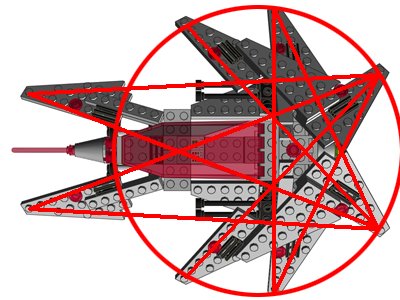 Geometry: Geometry:
Lots of nice angles, it would be nice to have somebody making a geometrical analysis of the craft, because it has so much going for it... But don't send the Knight Templars or the Catholic Church in my direction ;-)
Here are some of the most important angles of the wings:
- 0 degree - wings along the cockpit
- 14,03 degrees - front wings (half of a 1/3 hypotech of 28,07)
- 23,20 All slanted edges of the 4x8 wings
- 30 degrees - vertical rotation of all wingsections
- 36,87 degrees - 1/2-hypotech of the upper wings
- 53,13 - front part of the upper wings (90-36,87)
- 90 degrees - the rear lower wings
- 143,13 degrees - for the rear part of the upper wings (180-36,87)
The distances between the angles are: 14,03 - 9,17 - 6,08 - 6,87 - 16,26 - 36,87 - 36,87: Most of the angles seems thus to be approximately 6, 15, 30 or 36 - interesting.
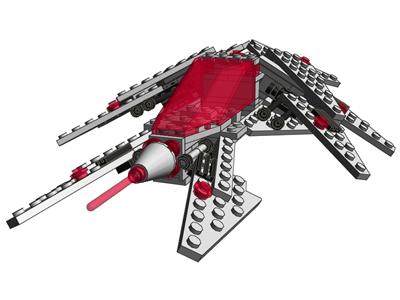 Aesthetics: Aesthetics:
As mentioned at the beginning, I consider this one of my very best post-MLCad/pre-Lugnet models:
Recreating old models in MLCad not only inspire you to improve on and experiment with earlier design-elements, it also forces you to be really concious about angles and how you achieve them (else, you can't recreate them on the computer).
I'm especially proud of the geometry, and waist section around the cockpit created by the wings running along and shielding the cockpit and the angled, split wings in front.
This model was presented in this thread on CSF
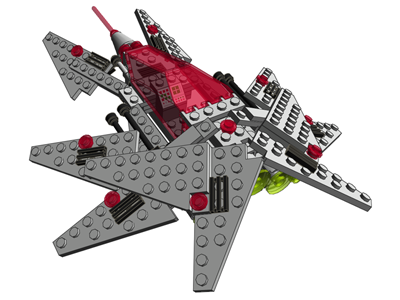 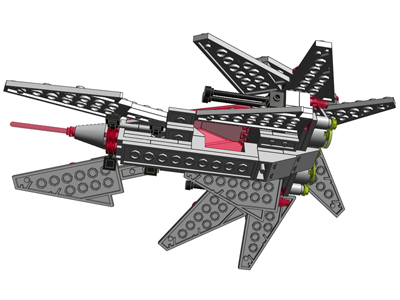 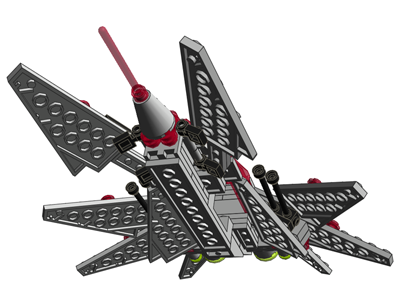
|
